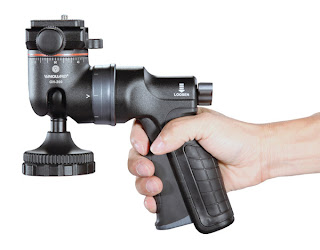How to Use a Tripod
Tips for Making Use of a Tripod With a DSLR Camera

- First, you need to make sure your tripod can adequately support the weight of your DSLR. It's no good
buying a cheap, flimsy tripod for $5, and then expecting it to support a DSLR with lenses! Invest in as
sturdy and hardy of a tripod as you can afford.
- Try to find level ground to put your tripod on, so that it's not rocking back and forth, placing it in danger of
tumbling.
- Spread all three legs out to their full width to ensure level support.
- If you need to extend your tripod, start from the top with the widest leg extensions. Lock each leg into
place once you have extended it.
- If you've extended your tripod to its full height, and you still need more extension, you can raise the center
column. However, you need to remember that a taller center column won't be as stable as the legs, and it
could cause the camera to wobble.
- If your tripod comes with a spirit level attached, use this to check that your tripod is level.
- Attach the camera to the tripod head using the screw-in tripod quick release plate. Screw this firmly into
your camera's tripod thread (located on the bottom of your camera), and click it into place on the tripod
head. Remember to lock this!
- Adjust your tripod head and tighten all screws so that the camera doesn't slip or move during shooting.
- If it's a particularly windy day, you can attach a heavy bag to the bottom of your tripod's center column to
help keep it stable.
When to Use a Tripod
- The most obvious use for a tripod is when you want to shoot long exposures without camera shake. For
slower than 1/60 shutter speeds, you'll need a tripod to achieve pin-sharp images.
- If you want to create an ethereal, misty look to running water, you'll also need to use a tripod and a long
exposure.
- An easy way to make sure your landscapes have a level horizon line is to use a tripod. Once you've
leveled the tripod and set it up correctly, you won't need to worry about your camera tilting as you
compose an image.
- If you're shooting still life, a tripod makes it easier to keep every different object at the same point in the
frame, and it helps with stability when focusing on small objects.
- Tripods are useful for shooting a succession of identical portraits, allowing the photographer to merely
place different people on the same mark and cutting down on the time it takes to compose each shot. This
can be particularly vital in fast-paced corporate photography.
- Tripods can help prevent back injuries! If your DSLR is heavy, and if you constantly carry it around your
neck while you're shooting, your back will suffer. Putting the camera on a tripod will help to avoid this
problem.


0 comments:
Post a Comment